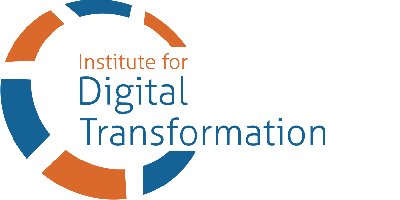Shaping the Future with Intent
As we begin a new year and continue advancing on our digital and human journey, this is the ideal moment to pause and reflect. Where are our organizations headed on their strategic and digital journeys, and what should the future look like? How can we stretch our imaginations to best shape that future? What assumptions are we basing the future on and are they still relevant? Equally important, what qualities and competencies will leaders need to navigate this future successfully?
This is a moment to rediscover the power of questions—questions that challenge and expand our thinking and fuel the transformation of organizations and societies. Many of the decisions we are making about our futures cannot be answered by superficial thinking or familiar answers. Asking the essential questions and embracing open dialog can guide us through the ever-increasing set of possibilities and solutions, to help us ensure that we are shaping our future with intent.
The Power of Questions
I believe that the act of framing the right questions and exploring them with openness is an incredibly powerful technique, both professionally as we lead our organizations as well as personally as we shape our lives. As I shared in my book Strategy to Reality (which was written through the lens of questions):
“Personally, I believe that questions are magical. They open a space for possibility and knowledge, and I insist that even the mysteries of the universe can be unlocked if we just ask the questions and let the answers unfold.”[i]
Questions can help us to overcome our biases towards action, solutions, busyness, and being right with a conscious pause that allows us to define the questions we are trying to answer and the outcomes we are trying to achieve. Questions help us to understand our own thinking and the assumptions and legacy narratives that may underpin it. As Albert Einstein is often quoted to say, “If I had 60 minutes to solve a problem and my life depended on it, I’d spend 55 minutes determining the right question to ask. Once I had the right questions, I could easily answer it in the remaining 5 minutes.”
In fact, a Socratic approach can be employed to bring additional rigor to framing the right questions and guiding a productive dialog. The Socratic method is a potent style of reasoning that can help to work out inconsistencies in our own thinking and help us explore what we really believe. In the view of Socrates, “the most urgent problem is that we’re certain when we shouldn’t be and think we know what we don’t.”[ii]
“The Socratic method means, among other things, asking and receiving questions fearlessly; it means saying what you think, and not getting hot when others say what they think; it means loving the truth and staying humble about whether you know it.”[iii]
Questions can vastly expand our vision as well and lead to entirely fresh insights. They give us the space to use our powerful imaginations and define possibilities. What if we could discover new ways to solve current problems? What if we could envision new strategies and business models for our organization that are even better suited to take us into the future? What if we could break down barriers across silos? What if we could think differently about our societies and our role and value within them?
In addition, the act of asking questions and embracing the resulting dialog leads to learning, seeing new perspectives, and building empathy. It engages and aligns people and forms bonds between them in the process. Even though the process of inquiry can be uncomfortable at times, in the bigger picture, the results and human connections they can create far outweigh the temporary discomfort.
Asking the Right Questions
The way we frame the questions we ask ourselves is crucial to unlocking new horizons and insights. So, what makes a great question?
As Seth Goldenberg states in his book Radical Curiosity, “essential questions embody several characteristics. Essential questions:
- Invite us to revisit ideas we have taken for granted
- Strip away the veneer and seek to get closer to the core motivations
- Allow for a wider array of contributing variables
- Focus on longer time frames, looking further out into the future
- Shine a light on our biases, making them transparent
- Resist the personal but embrace the empathetic
- Contain absurdity, celebrating an inversion of expectations
- Are intimate
- Break disciplinary, sector, and departmental barriers
- Empower critical thinking”[iv]
For example, for society we could ask questions such as, “What is the purpose of education?” or “Could we unleash a pandemic of health?” For business, we could ask “How do we define value?” or what new industry opportunities could we uncover by asking, “What is the future of water, food, or housing?”[v]
Moving Into Action
Here are a few ways we can incorporate the art of questioning and dialog as part of our daily work:
- Commit to being more curious. Create the time and space to ask essential questions and explore and embrace the resulting ideas with openness. Invest in activities that can stimulate your thinking (e.g., reading or traveling) and quiet your mind (e.g., spending time in nature or with intentional leisure activities).
- Start framing essential questions for your team and organization. Create the culture for dialog and keep asking and exploring.
- Make the practice of questioning and dialog a necessary leadership competency.
- Integrate essential questions into strategic conversations with executives and boards and employ the Socratic approach when applicable.
- Build an organizational culture that thrives on asking questions and being curious for better outcomes for business and society.
We can always embrace the transformative power of questions to unlock new possibilities and foster deeper connections and a more profound understanding of our world. The future will be shaped by the questions we dare to ask today and the courage to engage in meaningful dialog and explore them from fresh perspectives.
[i] Strategy to Reality: Making the Impossible Possible for Business Architects, Change Makers and Strategy Execution Leaders by Whynde Kuehn, published by Morgan James (2022), page xxi.
[ii] The Socratic Method: A Practitioner’s Handbook by Ward Farnsworth, published by Godine (2021), page 44.
[iii] Ibid, pages vii to viii
[iv] Radical Curiosity: Questioning Commonly Held Beliefs to Imagine Flourishing Futures by Seth Goldenberg, published by Penguin Random House (2022), page 105.
[v] Ibid, pages 35 and 104
Tag/s:ArchitectureBusiness TransformationDigital EnterprisePersonal Development






A most wonderful telling of the unsung hero of communication and enlightenment….well, from another unsung hero of several other things. Thanks so much for this, Whynde
Doug Goldberg thank you for your amazing words — to the unsung heros!